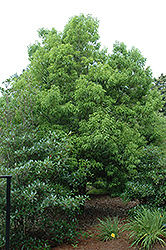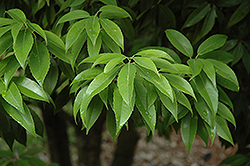It's all about ...
plants

Height: 40 feet
Spread: 30 feet
Sunlight:
![]()
Hardiness Zone: 8a
Description:
A small tree or large shrub with a broad spreading round topped crown; trunk is often twisted and bark usually furrowed at the base; young plants can form a dense thicket suitable as a windbreak; very drought tolerant
Ornamental Features
Myrtle Oak has dark green evergreen foliage on a tree with an oval habit of growth. The glossy oval leaves remain dark green throughout the winter. However, the fruit can be messy in the landscape and may require occasional clean-up.
Landscape Attributes
Myrtle Oak is a dense multi-stemmed evergreen tree with a shapely oval form. Its average texture blends into the landscape, but can be balanced by one or two finer or coarser trees or shrubs for an effective composition.
This tree will require occasional maintenance and upkeep, and is best pruned in late winter once the threat of extreme cold has passed. It is a good choice for attracting squirrels to your yard. Gardeners should be aware of the following characteristic(s) that may warrant special consideration;
- Messy
Myrtle Oak is recommended for the following landscape applications;
- Shade
- Vertical Accent
- Mass Planting
- Windbreaks and Shelterbelts
Planting & Growing
Myrtle Oak will grow to be about 40 feet tall at maturity, with a spread of 30 feet. It has a low canopy with a typical clearance of 2 feet from the ground, and should not be planted underneath power lines. It grows at a slow rate, and under ideal conditions can be expected to live to a ripe old age of 150 years or more; think of this as a heritage tree for future generations!
This tree should only be grown in full sunlight. It is very adaptable to both dry and moist locations, and should do just fine under average home landscape conditions. It is not particular as to soil type or pH. It is highly tolerant of urban pollution and will even thrive in inner city environments. This species is native to parts of North America.
This plant is not reliably hardy in our region, and certain restrictions may apply; contact the store for more information.

